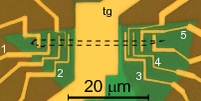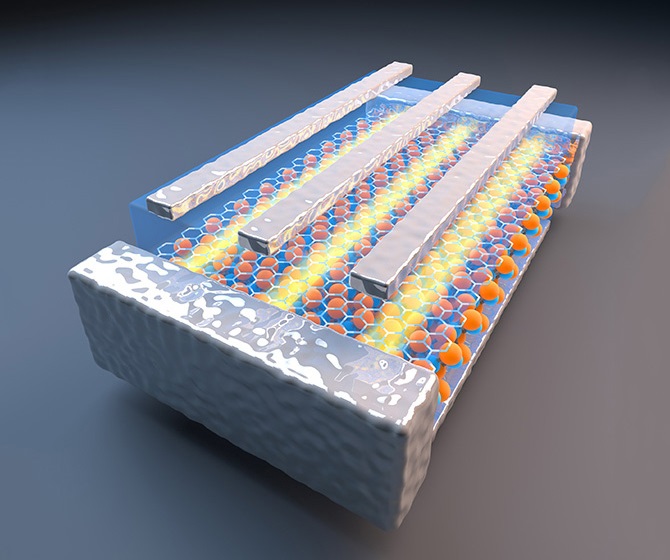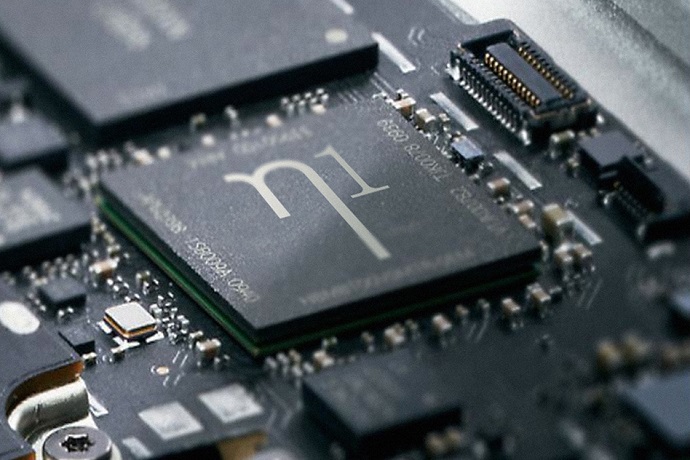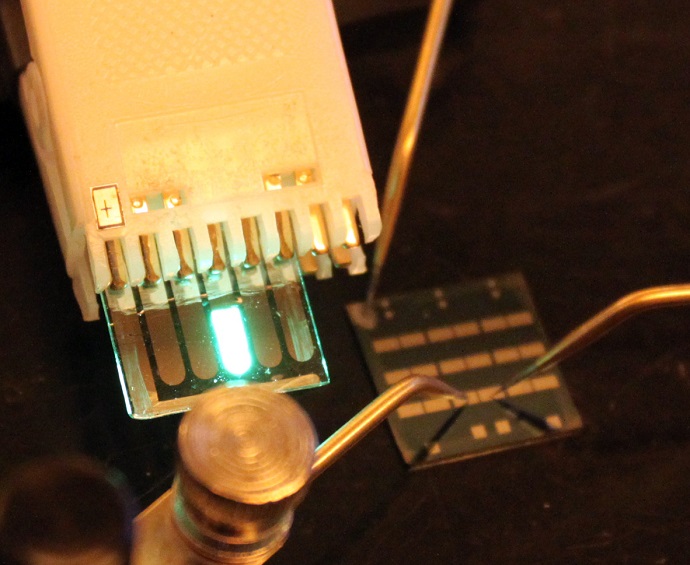August 25, 2014
Researchers from the FOM Foundation and University of Groningen have found a way to preserve spin information for much longer than previously possible. They isolated the spin information from the influence of the outside world in a nanoscale graphene device, in which they can easily manipulate the information with electric fields. This feature makes their device an attractive candidate for future computer data storage and for logic devices based on spins. The researchers published their results online on 22 August 2014 in Physical Review Letters.
The nanoscale device consists of a flake of graphene (a one-atom-thick layer of carbon) which is protected from the environment by stacked insulating layers of boron nitride. Electrons inside the graphene carry information: they each have a spin value (up or down), which is determined by the direction of their intrinsic magnetic moment. The spin values can be considered as computer bits, which can be used to transfer or store information.
A challenge is that electron spins usually lose their values over time (the spin relaxation time), which causes information to be lost. In graphene, this usually takes about 0.2 nanoseconds (one nanosecond is a billionth of a second). However, with their protected device, the researchers managed to increase the spin relaxation time in graphene to more than 2 nanoseconds.
Electric fields
So far, physicists could only change the value of spins in graphene (and therefore the value of the 'bits') by using magnetic fields. Using two gate electrodes, the researchers now managed to manipulate the spin information in their device with electric fields instead. Since electric fields are much easier to generate in nanoscale devices, these results pave the way to future spintronic devices based on graphene.
Spintronics
In the field of spintronics (which stands for spin and electronics), spin is used to convey information instead of electrical charges. Spin based devices have lower power consumption and are less volatile when compared to charge based ones. For this reason spintronic devices have been considered as an alternative for computer components, for instance in memory technologies like M-RAM and STT-RAM.
Reference
Controlling spin relaxation in hexagonal BN-encapsulated graphene with a transverse electric field , M.H.D. Guimarães, P.J. Zomer, J. Ingla-Aynés, J.C. Brant, N. Tombros and B.J. van Wees, Phys. Rev. Lett. 113, DOI: 10.1103/PhysRevLett.113.086602 .















